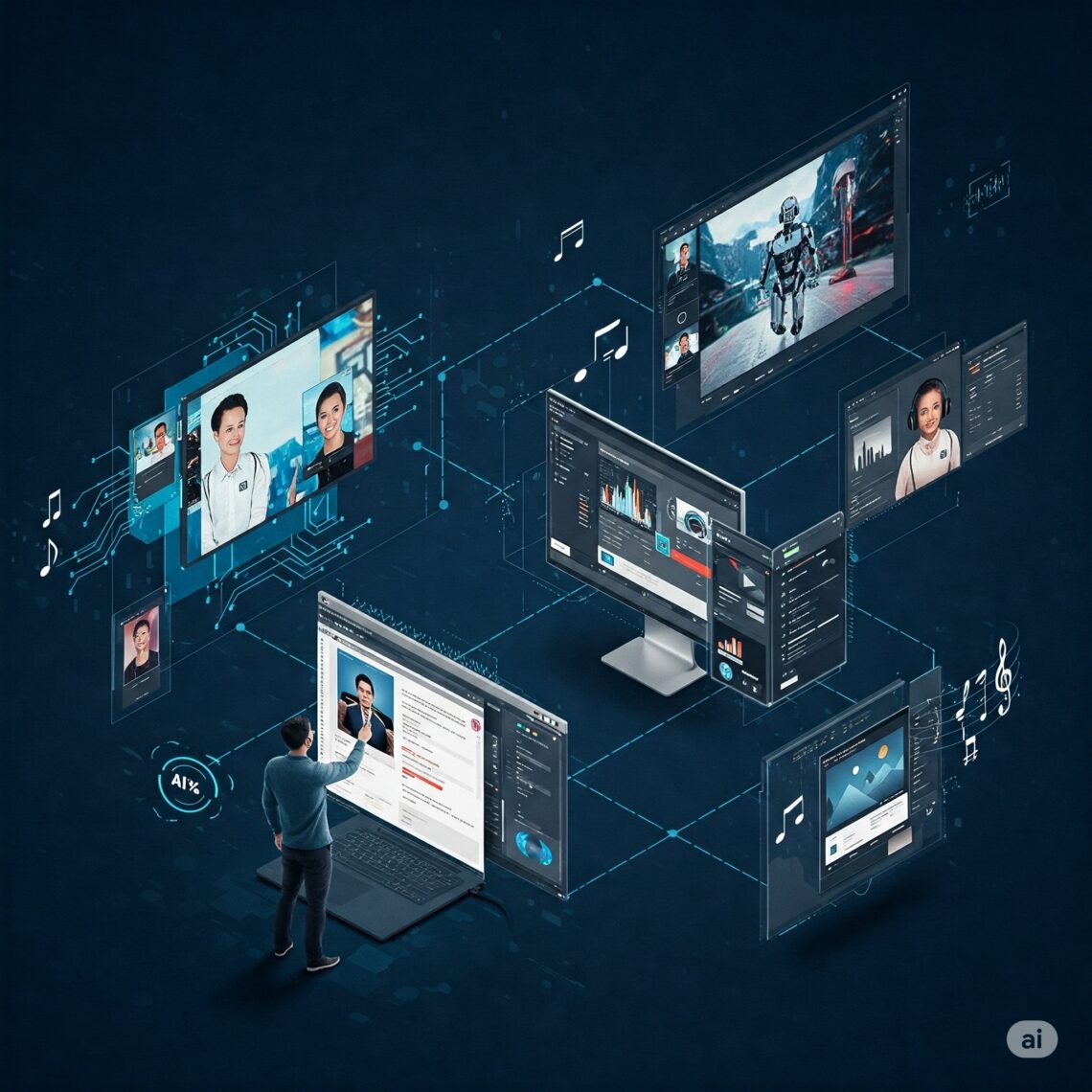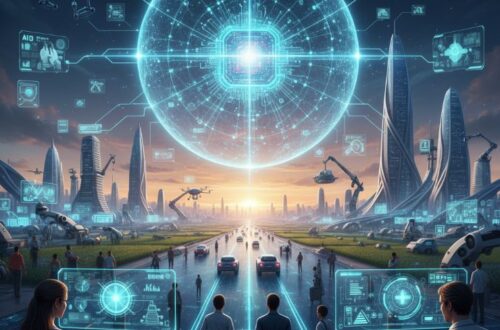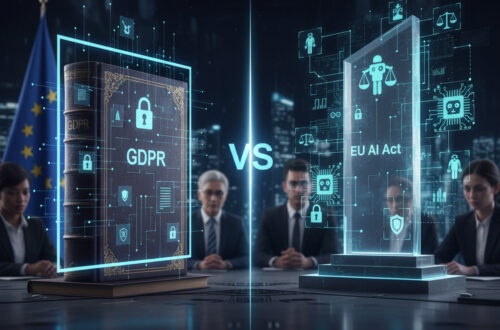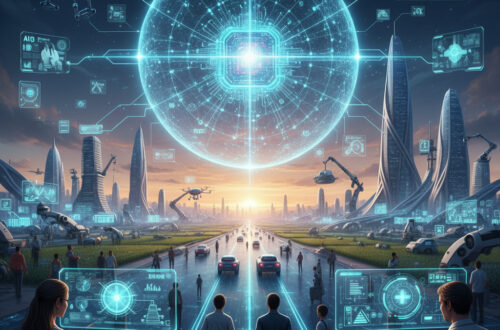Content creation in the digital age is a dynamic and ever-evolving landscape, demanding constant innovation and engagement across a multitude of platforms. From compelling blog posts and engaging social media updates to captivating videos and striking visuals, the need for high-quality content is relentless. Now, Artificial Intelligence (AI) has emerged as a powerful force, reshaping the very fabric of how we conceive, produce, and distribute content, offering unprecedented opportunities for automation, speed, and personalization. This article explores the burgeoning role of AI in content creation and its profound impact on digital publishing, marketing, journalism, design, and multimedia.
The journey from manual content creation to the era of smart automation has been a gradual yet transformative one. Early digital tools streamlined workflows, but AI represents a paradigm shift, enabling machines to actively participate in the creative process. By leveraging sophisticated algorithms, AI is no longer just a tool for editing or distribution; it’s becoming a partner in the generation of content itself.
What Is AI Content Creation?
AI content creation refers to the use of artificial intelligence algorithms, particularly those based on Natural Language Processing (NLP), Machine Learning (ML), and computer vision, to generate or significantly enhance various forms of content. This capability is largely driven by advancements in Large Language Models (LLMs) like GPT-4, Generative AI models capable of producing novel outputs, and Deep Learning, which allows AI to learn complex patterns from vast datasets.
AI’s creative output spans a wide range of content types:
- Text: Blog posts, articles, social media captions, marketing copy, scripts, emails, product descriptions, and even poetry.
- Audio: Music compositions, sound effects, voiceovers, podcast summaries, and audiobooks.
- Video: Script generation, automated video editing, text-to-video transformations, and even the creation of synthetic media.
- Graphics & Animation: Image generation, logo design, ad creatives, infographics, photo enhancement, and basic animations.
Key Areas Where AI Is Transforming Content Creation
AI is making significant inroads across various content creation domains:
a) Blog and Article Writing:
- Tools like ChatGPT, Jasper, and Copy.ai can assist with generating headlines, outlining blog post structures, and even drafting entire articles based on user prompts.
- AI excels at tasks such as language translation, ensuring content reaches a global audience, grammar correction, and tone adjustment, tailoring the writing style to specific platforms or audiences.
- Some AI tools even offer SEO optimization suggestions, helping creators craft content that is more likely to rank well in search engine results.
b) Social Media Content:
- Scheduling tools integrated with AI, such as some features in Buffer, can generate smart captions for social media posts, saving creators time and effort.
- AI algorithms analyze trends and suggest relevant hashtag optimization strategies to increase content visibility.
- AI can also assist in developing personalized content calendars based on audience behavior and engagement patterns.
c) Video Creation and Editing:
- Text-to-video platforms like Pictory and Lumen5 can automatically generate videos from written content, adding visuals, music, and voiceovers.
- AI aids in script generation, suggesting dialogue and narrative structures. It also streamlines automatic video editing, identifying key moments and suggesting cuts.
- The emergence of deepfakes and other synthetic media allows for the creation of realistic but artificial video content, opening new avenues for influencers and storytelling, while also raising ethical concerns.
d) Image and Design:
- AI image generators like DALL·E, Midjourney, and integrated features in Canva AI enable users to create unique images and artwork from textual descriptions, democratizing visual content creation.
- AI assists in logo design, generating multiple options based on brand keywords and aesthetics. It can also create ad creatives and infographics more efficiently.
- Photo enhancement (e.g., upscaling, color correction) and background removal are also being automated by AI-powered tools.
e) Audio and Music:
- AI-generated music platforms like Amper Music and Soundraw allow users to create royalty-free music tracks for videos, podcasts, and other projects without musical expertise.
- AI voice cloning technology can replicate existing voices for narration and voiceovers, while other AI tools can generate entirely synthetic voices.
- AI is also being used to create podcast summarizers and automate aspects of audio editing.
f) Interactive and Dynamic Content:
- AI chatbots can be used for dynamic content delivery, providing personalized information and engaging with users in real-time.
- AI algorithms can generate real-time news updates based on incoming data.
- Dynamic web copy and product descriptions can be automatically generated and tailored to individual user profiles and browsing behavior.
Benefits of AI in Content Creation
The adoption of AI in content creation offers several compelling advantages:
- 🚀 Speed and Scalability: AI can generate content much faster than humans, allowing creators and businesses to scale their output significantly.
- 🎯 Personalization at Scale: AI can analyze user data to create highly personalized content experiences for individual audience members.
- 💰 Cost-Efficiency: Automating content creation tasks can reduce the need for human labor, leading to significant cost savings, especially for startups and solopreneurs.
- 📈 SEO and Data-Driven Insights: AI tools can analyze search trends and audience behavior to optimize content for search engines and improve engagement.
- 🤝 Collaborative Tool: AI can act as a powerful brainstorming partner, helping human creators overcome writer’s block and explore new creative avenues.
Real-World Examples
The integration of AI into content creation is already evident across various industries:
- Forbes: The business publication uses its proprietary AI tool, Bertie, to recommend article topics to its journalists based on data analysis and trending themes.
- BuzzFeed: The popular media company utilizes AI to generate quizzes and other engaging content formats, leveraging its ability to identify viral patterns.
- Coca-Cola: The global beverage giant has experimented with AI-generated advertisements, using algorithms to create both text and visual content for marketing campaigns.
- YouTubers/Streamers: Many content creators on platforms like YouTube and Twitch are leveraging AI tools for scriptwriting assistance, automatic thumbnail generation, and video editing to streamline their production processes.
Challenges and Controversies
Despite its benefits, the rise of AI in content creation also presents significant challenges and controversies:
- Plagiarism and Originality Concerns: Content generated by AI models can sometimes inadvertently reproduce existing content from its training data, raising concerns about plagiarism and originality.
- Over-reliance on Automation: An over-dependence on AI for content creation could potentially stifle human creativity and lead to a homogenization of content.
- Ethical and Copyright Issues: The use of copyrighted material in AI training data and the ownership of AI-generated content are complex ethical and legal issues that are still being debated.
- Job Displacement Fears: Many writers, editors, designers, and other creative professionals harbor concerns about AI potentially automating their roles and leading to job displacement.
- Lack of Emotional Depth or Context Understanding: While AI can mimic human language and style, it often lacks genuine emotional depth, nuanced understanding of context, and the ability to convey truly original insights based on lived experience.
AI and the Future of Creativity
The future of content creation is likely to be characterized by a human + AI synergy, a co-creation model where AI acts as a powerful assistant and collaborator to human creators. AI can serve as a valuable brainstorming partner, helping to generate initial ideas and overcome creative blocks. However, creative oversight from humans will remain crucial to ensure the quality, authenticity, and ethical integrity of the final content. This collaboration can also lead to greater accessibility for non-writers and non-designers, empowering individuals with limited creative skills to express themselves and create content more easily.
Best Practices When Using AI for Content Creation
To leverage the benefits of AI while mitigating its risks, creators should adopt the following best practices:
- Always edit and humanize AI content: Treat AI-generated content as a starting point and infuse it with human voice, style, and critical thinking.
- Use AI for inspiration, not complete automation: Employ AI to generate ideas, outlines, and initial drafts, but rely on human creativity for the core message and unique perspective.
- Maintain ethical standards: Ensure proper attribution when using AI-generated content, verify the accuracy of information, and avoid generating misleading or harmful content. Be mindful of copyright issues related to training data.
- Train teams to use AI as a tool, not a replacement: Focus on upskilling creative professionals to effectively utilize AI tools as part of their workflow, rather than viewing AI as a direct substitute for human talent.
Conclusion
AI is not poised to replace human creators entirely; instead, it is emerging as a powerful tool that can augment creativity, enhance efficiency, and unlock new possibilities in content generation. The future of content creation lies in the synergistic partnership between human ingenuity and artificial intelligence. By embracing these tools thoughtfully and maintaining the essential human touch, creators can navigate this evolving landscape and harness the transformative power of AI to produce more engaging, personalized, and impactful content than ever before.





